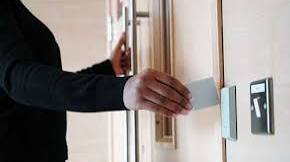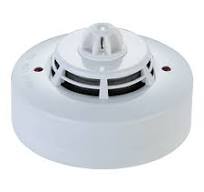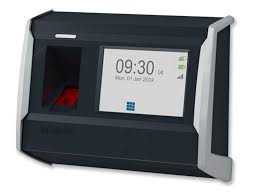Implementing a door access control system in an office environment is crucial for ensuring security and managing access to different areas within the premises. These systems offer a sophisticated and efficient way to restrict entry to authorized personnel only, enhancing overall safety and protection of valuable assets.
One of the key benefits of a door access control system for offices is the ability to customize access levels for individual employees or groups. This means that certain areas can be restricted to specific staff members based on their roles or clearance levels, reducing the risk of unauthorized entry and potential security breaches.
Moreover, door access control systems provide a detailed log of entry and exit activities, allowing administrators to track movements within the office premises in real-time. This feature not only enhances security but also enables quick identification of any irregularities or suspicious behavior.
Modern door access control systems offer various authentication methods such as key cards, PIN codes, biometric scans, or even smartphone-based credentials. This versatility ensures convenience for employees while maintaining a high level of security against unauthorized access attempts.
In addition to enhancing security measures, door access control systems can also streamline visitor management processes in offices. Temporary access credentials can be easily issued to visitors or contractors, ensuring controlled entry and monitoring their movements during their stay on the premises.
Overall, investing in a door access control system for an office is a proactive step towards safeguarding both physical assets and sensitive information. By implementing robust security measures through these systems, businesses can create a secure and efficient working environment for their employees while minimizing potential risks associated with unauthorized access.
8 Key Benefits of Implementing a Door Access Control System in the Office
- Enhances overall security by restricting access to authorized personnel only.
- Customizable access levels for different employees or groups based on roles and clearance levels.
- Provides a detailed log of entry and exit activities for real-time monitoring.
- Offers various authentication methods such as key cards, PIN codes, biometric scans, or smartphone-based credentials.
- Streamlines visitor management processes with easy issuance of temporary access credentials.
- Reduces the risk of unauthorized entry and potential security breaches within the office premises.
- Enhances employee safety by ensuring controlled access to different areas of the office.
- Improves operational efficiency by automating access control processes and minimizing manual interventions.
Challenges and Considerations of Implementing Door Access Control Systems in Offices
- Initial setup costs can be high, especially for larger office spaces.
- Maintenance and repair costs may add to the overall expenses over time.
- Technical glitches or system malfunctions could lead to temporary access disruptions.
- Employees may forget or lose their access credentials, causing inconvenience and delays.
- Integration with existing security systems or software may pose compatibility issues.
- Complexity in managing access levels and permissions could result in administrative challenges.
- In case of power outages or system failures, manual overrides may be required for entry/exit.
Enhances overall security by restricting access to authorized personnel only.
Enhancing overall security by restricting access to authorized personnel only, a door access control system for offices plays a crucial role in safeguarding valuable assets and sensitive information. By implementing strict access restrictions, businesses can significantly reduce the risk of unauthorized entry and potential security breaches within their premises. This proactive measure not only deters unauthorized individuals from gaining entry but also provides peace of mind to employees and ensures a secure working environment where only authorized personnel can access designated areas, ultimately contributing to the overall safety and protection of the office space.
Customizable access levels for different employees or groups based on roles and clearance levels.
The ability to customize access levels for different employees or groups based on their roles and clearance levels is a significant advantage of implementing a door access control system in an office setting. This feature allows organizations to establish tailored security protocols, ensuring that only authorized personnel have entry to specific areas within the premises. By assigning unique access permissions according to job responsibilities and clearance levels, businesses can effectively manage and monitor employee movements, enhancing overall security while promoting operational efficiency.
Provides a detailed log of entry and exit activities for real-time monitoring.
One significant advantage of a door access control system for office environments is its capability to provide a detailed log of entry and exit activities, enabling real-time monitoring. This feature allows administrators to track and review the movements of individuals within the premises, offering insights into who accessed specific areas and at what times. By having access to this comprehensive activity log, businesses can enhance security measures, quickly identify any suspicious behavior or unauthorized access attempts, and maintain a secure working environment for employees and valuable assets.
Offers various authentication methods such as key cards, PIN codes, biometric scans, or smartphone-based credentials.
The door access control system for office offers a significant advantage by providing a range of authentication methods to ensure secure entry. Employees can choose from key cards, PIN codes, biometric scans, or smartphone-based credentials to access different areas within the premises. This versatility not only enhances convenience for users but also strengthens security measures against unauthorized access attempts. By offering multiple authentication options, the system caters to diverse preferences and ensures that only authorized personnel can enter restricted areas, contributing to a safer and more efficient office environment.
Streamlines visitor management processes with easy issuance of temporary access credentials.
Streamlining visitor management processes with easy issuance of temporary access credentials is a significant advantage of implementing a door access control system in an office setting. By providing a seamless method to issue temporary access credentials to visitors or contractors, the system ensures controlled entry and enhances security measures within the premises. This feature not only simplifies the visitor registration process but also enables efficient monitoring of visitor movements during their time on-site, contributing to a safer and more organized office environment.
Reduces the risk of unauthorized entry and potential security breaches within the office premises.
By implementing a door access control system in an office, the risk of unauthorized entry and potential security breaches within the office premises is significantly reduced. These systems provide a robust barrier against unauthorized access attempts, ensuring that only authorized personnel with the appropriate credentials can enter restricted areas. By restricting entry to designated individuals, businesses can effectively prevent security breaches, theft, or other malicious activities that may compromise the safety and confidentiality of the office environment. This proactive measure not only enhances overall security but also instills a sense of trust and confidence among employees regarding their workplace safety.
Enhances employee safety by ensuring controlled access to different areas of the office.
Enhancing employee safety is a paramount benefit of implementing a door access control system in an office setting. By ensuring controlled access to different areas of the office, this system significantly reduces the risk of unauthorized individuals entering restricted zones. Employees can feel secure knowing that only authorized personnel have access to sensitive areas, thereby minimizing potential threats and enhancing overall safety within the workplace. This proactive measure not only protects employees from potential security breaches but also fosters a sense of security and peace of mind, ultimately contributing to a conducive and secure working environment.
Improves operational efficiency by automating access control processes and minimizing manual interventions.
The implementation of a door access control system in an office setting significantly enhances operational efficiency by automating access control processes and reducing the need for manual interventions. By streamlining the authentication and entry procedures, employees can swiftly access designated areas without delays or complications, thereby optimizing workflow and productivity. This automation not only saves time but also minimizes the margin for error associated with manual access control methods, ensuring a smooth and efficient operation within the office environment.
Initial setup costs can be high, especially for larger office spaces.
One significant drawback of implementing a door access control system for office spaces is the high initial setup costs, particularly for larger premises. The installation of sophisticated access control hardware, software, and infrastructure can require a substantial upfront investment, which may pose a financial challenge for businesses operating on limited budgets. The cost of equipment, professional installation services, and system integration can add up quickly, making it difficult for some organizations to justify the expense, especially when considering the scale of implementation across multiple entry points in a large office environment.
Maintenance and repair costs may add to the overall expenses over time.
One notable drawback of implementing a door access control system in an office is the potential increase in maintenance and repair costs that may accumulate over time. While these systems are designed to enhance security and streamline access management, regular maintenance and occasional repairs are essential to ensure their optimal functionality. The need for technical support, software updates, hardware replacements, and troubleshooting can add up as additional expenses for the organization. Therefore, it is important for businesses to factor in these ongoing maintenance costs when budgeting for the installation and operation of a door access control system in their office premises.
Technical glitches or system malfunctions could lead to temporary access disruptions.
Technical glitches or system malfunctions in door access control systems for offices can pose a significant con as they have the potential to lead to temporary access disruptions. In the event of such issues, employees may face difficulties entering or exiting specific areas within the office premises, causing inconvenience and potential delays in their daily operations. Moreover, these disruptions could also compromise security protocols, allowing unauthorized individuals to gain access during system downtime. It is essential for businesses to have contingency plans in place to address technical failures promptly and minimize the impact of temporary access disruptions on overall office security and operational efficiency.
Employees may forget or lose their access credentials, causing inconvenience and delays.
One significant drawback of a door access control system for office is the possibility of employees forgetting or misplacing their access credentials, leading to inconveniences and delays in accessing restricted areas. This scenario can disrupt workflow efficiency and productivity, especially if employees need immediate access to certain spaces but are unable to do so due to the loss of their key cards, PIN codes, or other authentication methods. In such situations, the administrative burden may increase as employees seek replacements or temporary access permissions, highlighting a potential downside of relying solely on electronic access control systems for office security.
Integration with existing security systems or software may pose compatibility issues.
Integration with existing security systems or software may pose compatibility issues, which can be a significant drawback of implementing a door access control system in an office setting. Incompatibility between different systems can lead to technical challenges, delays in deployment, and additional costs for resolving integration issues. This con highlights the importance of thorough planning and assessment of compatibility requirements before investing in a door access control system to ensure seamless integration with existing security infrastructure and software platforms.
Complexity in managing access levels and permissions could result in administrative challenges.
The complexity in managing access levels and permissions within a door access control system for office settings can present significant administrative challenges. With a multitude of employees requiring different levels of access to various areas, ensuring that the right permissions are granted to the right individuals can be a time-consuming and intricate task. This complexity may lead to delays in updating access levels, potential errors in assigning permissions, and difficulties in maintaining an accurate and up-to-date access control system. As a result, administrative staff may face challenges in efficiently managing access controls, which could impact overall security protocols and hinder the seamless operation of the system within the office environment.
In case of power outages or system failures, manual overrides may be required for entry/exit.
During power outages or system failures, one significant drawback of door access control systems for offices is the potential need for manual overrides to facilitate entry and exit. In such situations, employees may face inconvenience and delays in accessing or leaving the premises, disrupting normal operations and workflow. This reliance on manual intervention can compromise security protocols and create vulnerabilities that may be exploited by unauthorized individuals seeking access during system downtime. Therefore, while door access control systems offer enhanced security features, the reliance on manual overrides during emergencies or technical issues poses a notable challenge that organizations need to address for seamless operation and continued protection of their assets.




